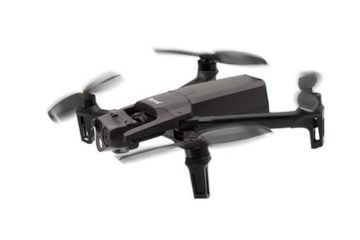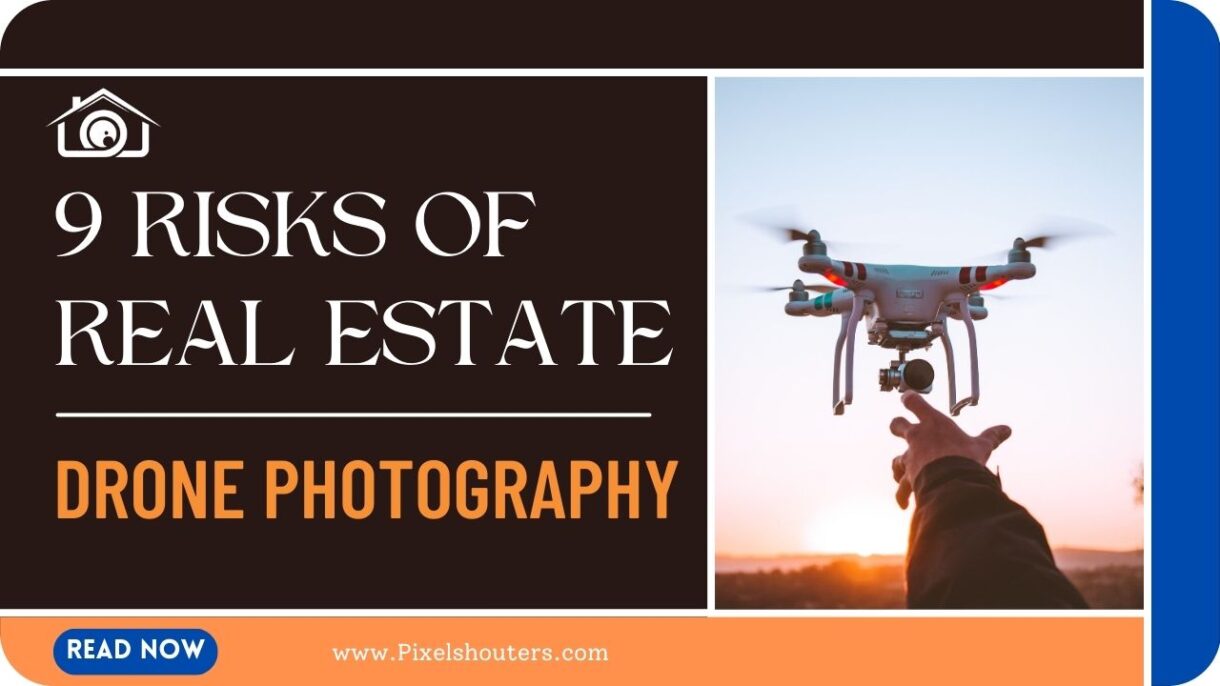Navigating the 9 Risks of Real Estate Drone Photography
Real estate photography has been transformed by the advent of drones, offering captivating aerial perspectives that enhance property marketing. However, with this innovative technology come inherent risks that must be addressed for safe and successful drone operations. This article explores the various risks associated with real estate drone photography and provides valuable insights on mitigating them effectively.
Table of Contents
1. Safety Precautions
Ensuring safety is paramount when conducting real estate drone photography. The well-being of both operators and those on the ground should be a top priority. To mitigate risks, drone pilots must receive proper training and certification. Understanding the technical aspects of the drone, flight controls, and emergency procedures is essential. Adhering to local aviation regulations and guidelines is crucial for safe operations. This includes respecting altitude limits, maintaining line-of-sight, and avoiding restricted areas. Implementing pre-flight checklists, using GPS and obstacle avoidance systems, and carrying safety equipment like fire extinguishers and first aid kits are recommended practices.

2. Equipment Failure and Maintenance
While drones are reliable tools, equipment failures can still occur. Regular maintenance and inspections are vital to identify potential issues before they lead to accidents. Pilots should conduct pre-flight checks to ensure that batteries, motors, propellers, and other components are in good working condition. Carrying spare parts and backup drones can minimize disruptions due to equipment failures during shoots. Calibrating the drone’s sensors and compass before each flight is crucial for accurate navigation and stable flight performance. By following manufacturer guidelines and periodic maintenance schedules, operators can minimize the risks associated with equipment failure.
3. Weather Conditions
Weather conditions significantly impact the safety and feasibility of real estate drone photography. Strong winds, rain, fog, or extreme temperatures can pose risks to both the drone and the surrounding environment. Monitoring weather forecasts and local conditions is essential. Pilots should avoid flying in adverse weather and reschedule shoots accordingly. Understanding the drone’s limitations and ensuring that it can withstand weather conditions is crucial. Pilots must also be aware of how weather affects flight stability, battery life, and signal interference. By exercising caution and prioritizing safety, the risks associated with unfavorable weather conditions can be minimized.
4. Privacy and Legal Issues
Real estate drone photography raises concerns about privacy and legal boundaries. It is essential to respect individuals privacy rights while capturing aerial shots. Operators must be knowledgeable about local privacy laws and regulations governing drone operations. Seeking necessary permissions and informing property owners and occupants about drone flights can help prevent privacy-related issues. Additionally, avoiding sensitive areas, such as private gardens or windows, is crucial to maintaining ethical standards. Compliance with data protection laws and regulations is also vital when handling and storing images or videos captured during drone photography sessions.
5. Property Damage and Liability

Accidental property damage is a potential risk associated with real estate drone photography. Operators must exercise caution to prevent collisions with buildings, trees, power lines, or other structures. Maintaining visual contact with the drone throughout the flight can help identify potential obstacles. Adequate training in maneuvering and navigating around objects is essential. Additionally, obtaining appropriate insurance coverage is crucial to mitigate financial risks in case of accidents or property damage. Real estate professionals and drone operators should consult with insurance experts to ensure adequate coverage for potential liabilities.
6. Interference with Airspace
Unauthorized drone flights in controlled airspace pose risks to aviation safety. Operators must familiarize themselves with airspace regulations and restricted areas. Checking for No-Fly Zones and Temporary Flight Restrictions (TFRs) is essential before conducting drone operations. Violating airspace regulations can result in legal consequences and pose significant risks to public safety. Utilizing drone flight planning apps or airspace maps can aid in identifying safe and permissible areas for drone flights. By understanding and adhering to airspace regulations, operators can avoid potential risks and ensure safe operations.
7. Data Security and Cyber Threats
With the increasing use of real estate drone photography, data security becomes a crucial consideration. Protecting captured images, videos, and other data from unauthorized access or cyber threats is vital. Operators should employ encryption methods to secure data during storage and transmission. Storing data on secure servers or cloud platforms with stringent security measures can help minimize the risks of data breaches. Regularly updating software and firmware on drones and ground control systems is also important to address potential vulnerabilities. By implementing robust data security practices, operators can safeguard sensitive information and maintain client trust.
8. Public Perception and Reputation
Negative drone incidents can impact the reputation of real estate professionals and drone operators. Maintaining high ethical standards and responsible behavior is essential. Engaging in open communication with property owners, addressing their concerns, and respecting privacy boundaries contribute to building trust. Sharing success stories and highlighting the benefits of drone photography in real estate can help shape a positive perception of this technology. By consistently demonstrating professionalism and responsible drone operations, real estate professionals can enhance their reputation and foster positive public perception.
9. Insurance Coverage for Drone Operations
Obtaining comprehensive insurance coverage specific to real estate drone photography is crucial. Drone operators should consider policies that provide liability coverage for accidents, property damage, and bodily injury. Insurance coverage can help protect both the operator and the clients in case of unforeseen incidents during drone flights. It is advisable to consult with insurance experts or brokers who specialize in drone-related coverage to ensure adequate protection. Understanding the policy terms, exclusions, and limitations is essential to make informed decisions.
Real estate agents may reduce financial risks and work with peace of mind by having the right insurance coverage in place. Including this point will provide valuable information about the importance of insurance coverage and its role in mitigating risks associated with real estate drone photography.

Conclusion
Real estate drone photography offers tremendous opportunities for showcasing properties, but it also comes with inherent risks. By understanding and addressing these risks, real estate professionals can conduct safe and successful drone operations. Prioritizing safety precautions, maintaining equipment, considering weather conditions, respecting privacy and legal boundaries, and securing data are essential elements of risk management. By adopting best practices, real estate professionals can navigate the risks associated with real estate drone photography and leverage its benefits effectively.
